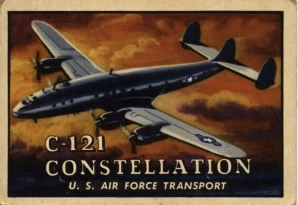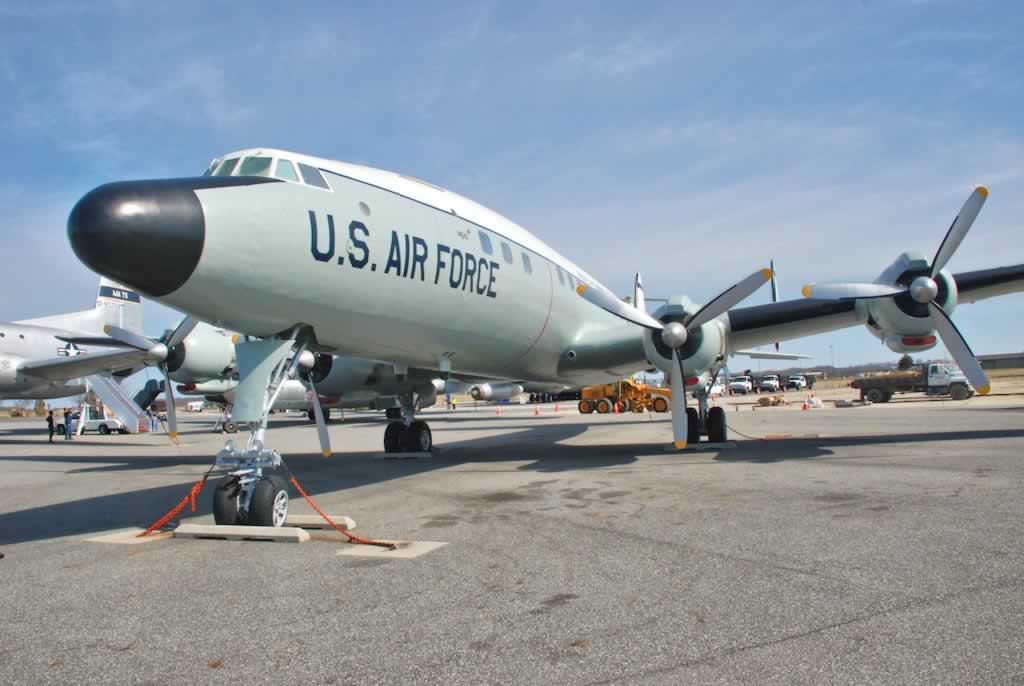Lockheed Constellation
The Lockheed Constellation was the first commercial transport plane to travel at 300 mph and was the last of the great American propeller-driven airliners.
The "Connie" was in the fleet of dozens of airlines around the world, such as TWA, Qantas, Sabena, Trans Canada, Air France, American Airlines, Delta Air Lines, Eastern Air LInes and Pan American World Airways.
The C-121 was the military variation of the commercial Model 749 Constellation. Between 1948 and 1955 the U.S. Air Force ordered 150 C-121As for use as cargo/passenger carriers, executive transports, and airborne early warning aircraft. The plane also saw service with the U.S. Navy.
As a troop carrier the aircraft could carry a maximum of 44 passengers.
The Military Air Transport Service (MATS) used a fleet of 70 C-121s from 1948 to 1967.
The Constellation in the Military
USAF Lockheed C-121G of the Miliary Air Transport Service, S/N 54-4052 in flight |
||||

|
ED-121T on display at the Peterson Air & Space Museum in Colorado Springs, CO (photo by Michael Hoschouer) |
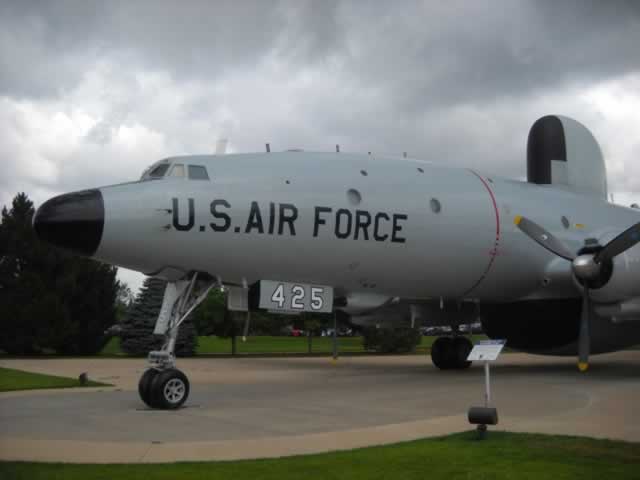 |
Lockheed C-121C, S/N 54-177, at the Udvar-Hazy Smithsonian Museum in Washington, D.C. (Staff Photo) |
 |
The Constellation as a Commercial Airliner
Trans-Canada Constellation at the Museum of Flight in Seattle, Washington (Staff Photo) |
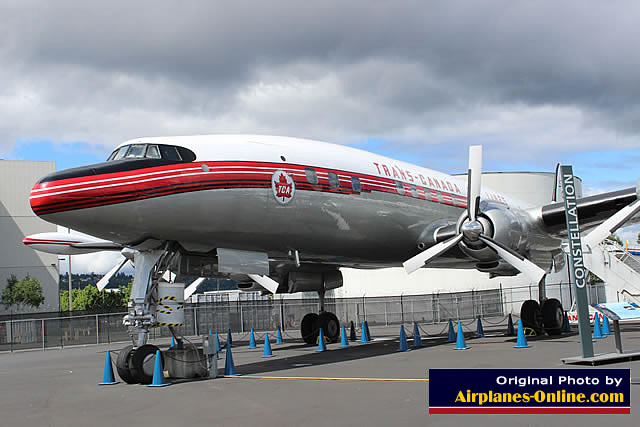 |
Pan American World Airways Constellation |
 |
Trans World Airlines Constellation in Flight |
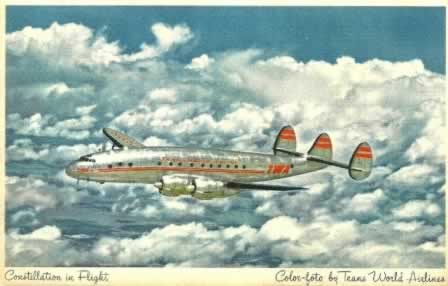 |
In Flight with TWA ... The Trans World Airlines Super-G Constellation |
 |
Lockheed Constellation of Trans World Airlines |
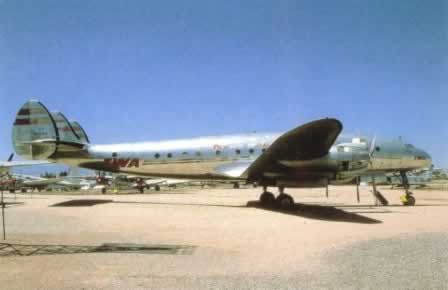 |
VC-121E Presidential Aircraft
President Eisenhower introduced two Lockheed C-121 Constellations (VC-121E) to presidential service. These aircraft were named Columbine II and Columbine III by First Lady Mamie Eisenhower after the columbine, the official state flower of Colorado, her adopted home state.
"The Columbine" presidential aircraft, Lockheed VC-121 Constellation, S/N 53-7885 |
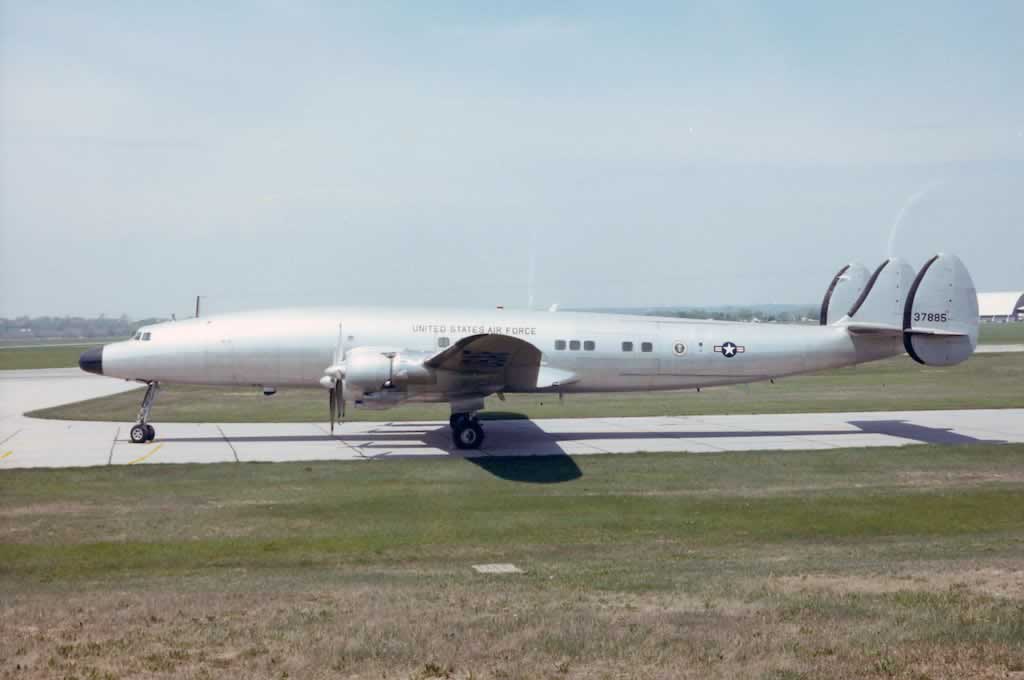 |
Lockheed VC-121 "Columbine", Pima Air & Space Museum, Tucson AZ (Staff Photo) |
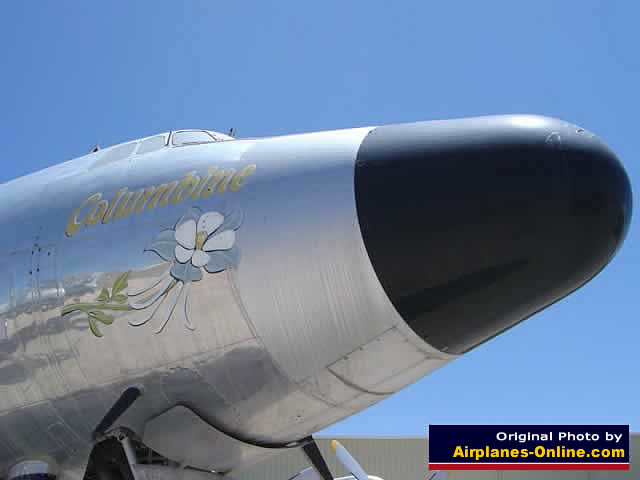 |
EC-121 "Warning Star" Early Warning Aircraft
Numerous airborne early warning versions were also constructed as the EC-121 Warning Star. The military adapted the plane for its further use in the 1950s and 60s by modifying it for radar and using it as an aerial extension of the Distant Early Warning (DEW) Line, and in aiding in the rescue of downed aircraft in Southeast Asia.
U.S. Air Force EC-121 538 on the apron
(photo courtesy of R. Nelson) |
 |
U.S. Air Force EC-121 425 on the apron in the foreground, 119 in the background
(photo courtesy of R. Nelson) |
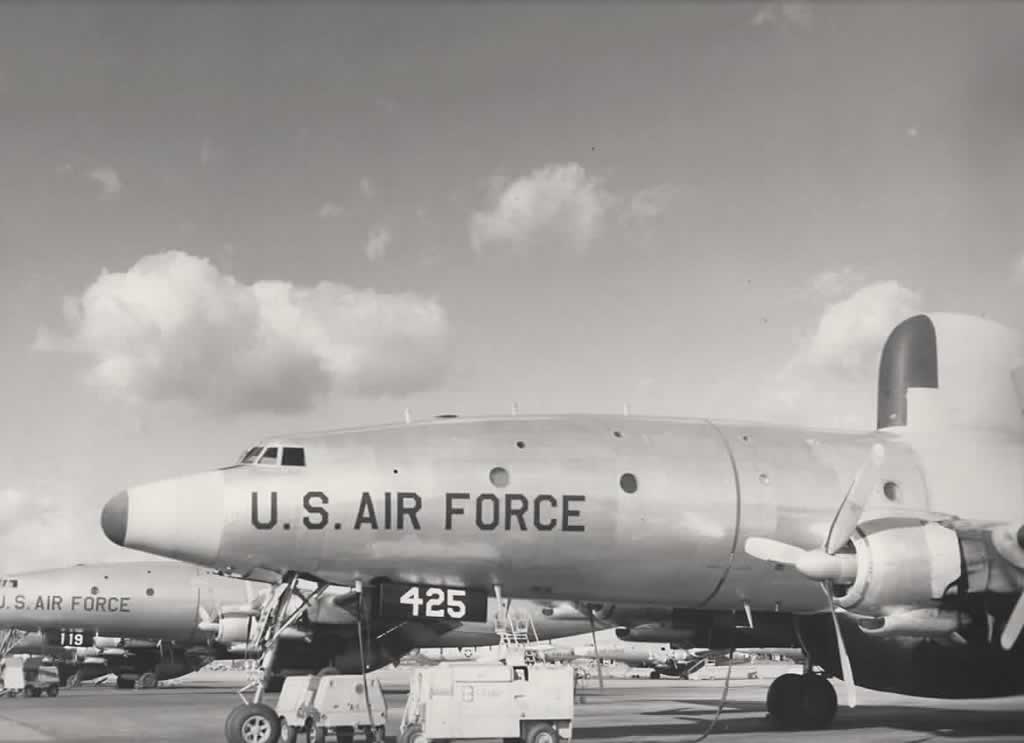 |
Related U.S. Air Force Radar & Early Warning Facilities
The Texas Towers were a set of off-shore radar platforms used by the United States Air Force during the Cold War that were modeled on the offshore oil drilling platforms first employed off the Texas coast. The platforms were used for radar surveillance of the Atlantic Ocean near the eastern seaboard of the United States from 1958 to 1963.
On January 11, 1954, the USAF approved the construction of 5 Texas Towers as part of the Air Defense System. Only three were built: Number 2, 3 and 4.
The towers were located in the Atlantic Ocean some distance from shore to extend the radar coverage of the east coast. The towers rose 65 feet above the sea and were serviced by helicopter and boat. The personnel on the towers were assigned to Otis Air Force Base in Massachusetts.
Texas Tower #4 suffered severe structural damage during Hurrican Donna in September 1960 and, before repairs could be completed, was destroyed by a winter storm on January 15, 1961. Twenty-eight airmen and civilian contractors died when the platform collapsed.
The remaining two towers were decommissioned in 1963 and demolished shortly thereafter.
USAF Texas Tower No. 3 - Nantucket Shoal, located in 80-feet of water, 100 miles south-east of Rhode Island (photo courtesy of R. Nelson) |
 |


